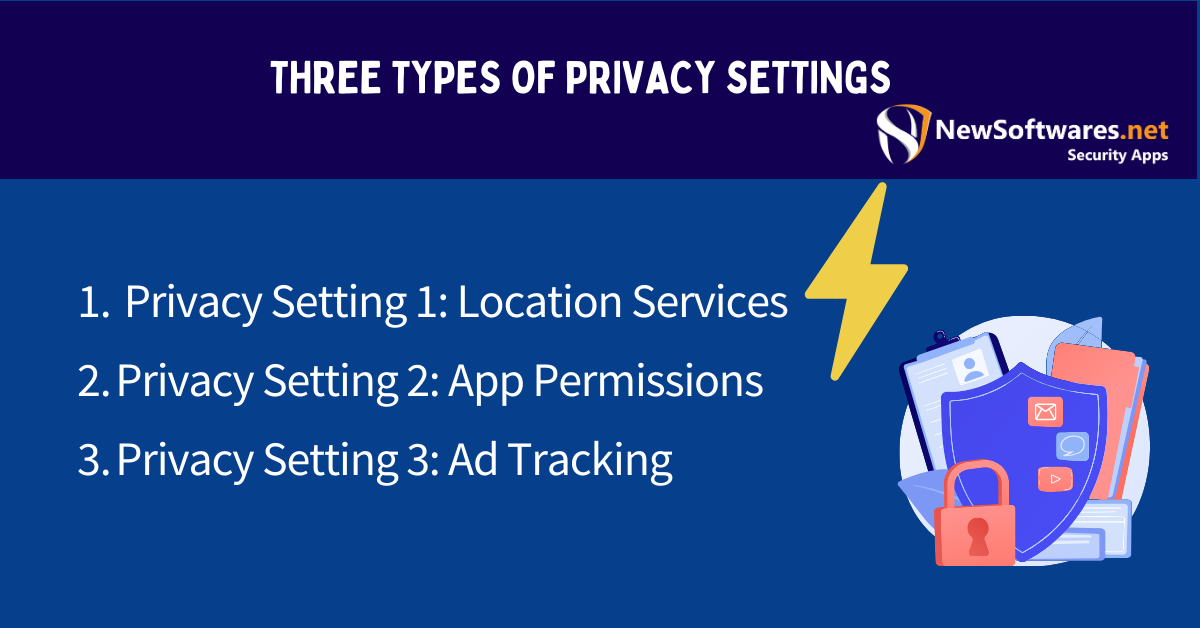In today’s digital age, smartphones have become integral to our lives. From staying connected with loved ones to managing our schedules, these devices hold a wealth of personal information. However, many users are unaware that their phones collect significant meta-data. I will explore three privacy settings you can change on your phone to limit meta-data collection safeguarding your personal information and privacy.
Understanding Meta-Data Collection
Before diving into the privacy settings, it’s essential to understand what meta-data is and how it is collected. Meta-data refers to the information automatically generated by your phone each time you use it. This includes your location, browsing history, and app usage. While meta-data might seem harmless, it can provide valuable insights into your life, habits, and preferences.
Let’s delve deeper into the world of meta-data collection. Your GPS, for instance, plays a crucial role in gathering location data. Whenever you use navigation apps or check in at a specific place on social media, your phone’s GPS records this information. This data can create a detailed map of your movements, revealing where you live, work, and spend your leisure time.
But it doesn’t stop there. Social media apps also contribute to the collection of meta-data. When you post, like, or share content on platforms like Facebook and Instagram, they track your interactions and store this information. This data can be used to build a comprehensive profile of your interests, preferences, and social connections.
In addition to GPS and social media apps, your smartphone’s operating system plays a significant role in meta-data collection. Every time you use your phone, the operating system records data about your device’s performance, battery usage, and even the apps you have installed. This information helps developers improve their products but can also be used to gain insights into your usage patterns and behaviour.
However, the collection of meta-data poses certain risks. It can potentially be exploited by malicious actors or utilized for invasive targeted advertising. Imagine receiving ads for products you were just discussing with a friend based on the meta-data collected from your conversations. This scenario highlights the importance of taking control of your privacy settings and understanding how your data is being used.
By being aware of the sources and methods of meta-data collection, you can make informed decisions about your privacy. Understanding the potential risks and benefits related with meta-data can empower you to protect your personal information and ensure that it is used in ways that align with your values and preferences.
The Role of Privacy Settings in Protecting Your Data
Privacy settings on your phone act as a crucial shield, putting you in control of the data gathered by your device. By customizing these settings, you can limit the flow of information and restrict access to your data. It’s important to note that privacy settings can vary depending on the operating system of your mobile and the version you are using.
Privacy has become a paramount concern in today’s digital age, where our lives are increasingly tangled with technology. With the vast amount of data being collected and shared, it is essential to understand how privacy settings work and their role in safeguarding our personal information.
How Privacy Settings Work
Privacy settings give you granular control over specific features and functionalities on your device. You can enable or disable certain features by toggling the settings, thereby managing what data is collected and shared.
For example, you can control the permissions given to apps, limit location services, and restrict ad tracking. Each of these settings plays a vital role in protecting your privacy and ensuring that your personal information does not fall into the wrong hands.
When you customize your privacy settings, you create a digital fortress around your data. You can decide who can access your information and under what circumstances.
By limiting app permissions, you can prevent certain applications from accessing sensitive data such as your contacts, photos, or location. This ensures that only trusted apps can access your personal information, reducing the risk of data breaches and unauthorized use.
Furthermore, by disabling location services, you can prevent your device from constantly tracking your whereabouts. This protects your privacy, conserves battery life, and reduces data usage.
Another important aspect of privacy settings is ad tracking. By restricting ad tracking, you can prevent advertisers from collecting and utilizing your browsing habits to target you with personalized ads. This helps maintain your anonymity and reduces the amount of intrusive advertising you encounter.
The Importance of Regularly Updating Your Privacy Settings
Setting up your privacy preferences is not a one-time task. As technology changes and new threats emerge, it is crucial to regularly analysis and update your privacy settings. It will allow you to stay one step in advance of potential privacy breaches and ensure your data remains secure.
Operating system updates often comprise security patches and enhancements to privacy settings. By keeping device up to date, you can get benefit from the latest advancements in privacy protection.
Additionally, regularly reviewing your app permissions is essential. Over time, you may have installed new applications that require access to certain data. By periodically checking and adjusting these permissions, you can ensure that only necessary and trusted apps can access your personal information.
Staying informed about the latest privacy threats and best practices is also important. Technology is constantly evolving, and new privacy concerns may arise. By remaining updated with the latest news and recommendations, you can make informed decisions when updating your privacy settings.
Remember, your privacy is in your hands. By taking the time to understand and customize your privacy settings, you can protect your data and enjoy a safer digital experience.
Three types of privacy settings
Privacy Setting 1: Location Services
Location services on your phone can provide immense convenience, such as finding nearby restaurants or navigating unfamiliar areas. However, this feature also collects your location data, which can be used to create a detailed profile of your movements.
What are Location Services?
Location services use GPS, Wi-Fi networks, and cellular towers to accurately determine your device’s location. This allows apps and services to provide customized content based on your whereabouts.
Steps to Limit Location Services
If you wish to limit the collection of your location data, follow these steps:
- Go to your phone’s settings and locate the “Privacy” or “Location” option.
- Select “Location Services” to access the settings related to location tracking.
- You can disable location services or select specific apps to access your location.
Limiting location services can significantly reduce the amount of meta-data collected and enhance your privacy.
Privacy Setting 2: App Permissions
Apps have become integral to our digital lives, offering various functionalities. However, some apps may require unnecessary permissions, granting them access to your personal information without your knowledge or consent.
Understanding App Permissions
App permissions refer to the access granted by users to certain features or data on their devices. These can include permission to access contacts, photos, a microphone, a camera, and more.
How to Manage App Permissions
To manage app permissions effectively, follow these steps:
- Navigate to your phone’s settings and locate the “Apps” or “Applications” option.
- Select the specific app you want to manage.
- Review the permissions currently granted to the app and disable any unnecessary access for its functionality.
By carefully managing app permissions, you can maintain better control of data and mitigate potential privacy risks.
Privacy Setting 3: Ad Tracking
Ad tracking is monitoring your online activities to deliver targeted advertisements. This can often feel intrusive, as ads seem to reflect your recent searches or interests.
The Basics of Ad Tracking
Ad tracking involves collecting information about your browse habits, such as the websites you visit and the products you search for. This data is then used to create targeted ads more likely to capture your attention.
How to Limit Ad Tracking
To limit ad tracking, follow these steps:
- Access your phone’s settings and look for the “Privacy” or “Ads” option.
- Locate the “Limit Ad Tracking” or “Opt-out of Interest-Based Ads” setting.
- Enable this setting to restrict ad tracking and prevent personalized advertisements.
By opting out of ad tracking, you can enhance your privacy and reduce the targeted advertising you encounter while using your phone.
Key Takeaways
- Understanding meta-data collection and its risks is crucial in safeguarding your personal information.
- Privacy settings on your phone give you control over the data collected and shared by your device.
- Regularly updating your privacy settings is imperative to stay ahead of potential privacy breaches.
- Limiting location services, managing app permissions, and opting out of ad tracking are effective ways to protect your privacy.
FAQs
Q: Can I completely stop the collection of meta-data on my phone?
A: While it is challenging to completely prevent meta-data collection, you can significantly minimize it by adjusting your privacy settings and limiting the permissions given to apps.
Q: Will changing my privacy settings affect the functionality of my phone?
A: While modifying privacy settings may impact certain features or functionalities, it is essential to balance privacy and convenience. Review the settings carefully and make informed decisions based on your privacy preferences.
Q: How frequently should I update my privacy settings?
A: It is recommended to review and update your privacy settings periodically or when significant changes are in your phone’s operating system or the apps you use. This will ensure your privacy remains intact and your personal information is well-protected.
Conclusion
Your privacy is paramount, and taking control of your privacy settings is important in safeguarding your personal information. By following the steps outlined in this article and regularly reviewing and updating your settings, you can limit the collection of meta-data on your phone and protect your digital privacy.

